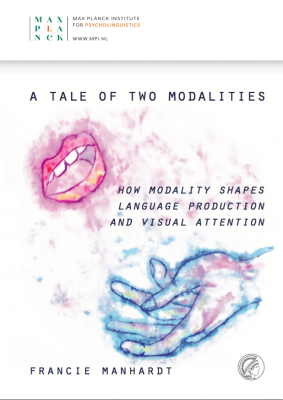Francie Manhardt will defend her thesis on Friday 12th of March 2021

Due to the restrictions surrounding the COVID-19 outbreak, the event will be accessible via live-stream.
Link to live-stream
Language is a powerful tool that enables us to talk about our experiences with the world. However, languages differ fundamentally from one another in how they package and represent different aspects of our experiences. Hence, there is linguistic variation across speakers of different languages as well as among bilinguals that speak different languages. This diversity has motivated researchers to explore whether different expressive options across different languages influence how speakers perceive and conceptualise the world differently.
Francie Manhardt’s thesis went beyond the previous literature to contribute to the debate on language and cognition universals and diversity. In her thesis, she introduced differences in language modality as a new angle to study the effects of language diversity on cognition and bilingual diversity. She explored this by comparing diversity between a spoken (Dutch) and a sign language (NGT) across hearing speaking and deaf signing populations as well as in hearing bilinguals who can both speak and sign, so-called hearing bimodal bilinguals. To do so, she focused on the domain of spatial language, specifically, on expressions of spatial relations, such as the books are to the left of the plant, where previous research has identified clear modality-specific differences between spoken and sign languages in their linguistic patterning.
Her results showed that the modality-specific affordances of the visuo-spatial modality of sign languages influence production differently in signing (deaf) populations compared to speaking (hearing) populations. These modality-driven differences in production can influence cognition; that is, thinking for speaking differs from thinking for signing. These patterns observed across different speaking (hearing) and signing (deaf) populations manifest themselves in bimodal bilinguals (hearing), in form of cross-linguistic influence between speech and sign across modalities, which changes their message conceptualization compared to that of different populations.
Link to sign language version of the explanation of Francie Manhardt's thesis
Share this page